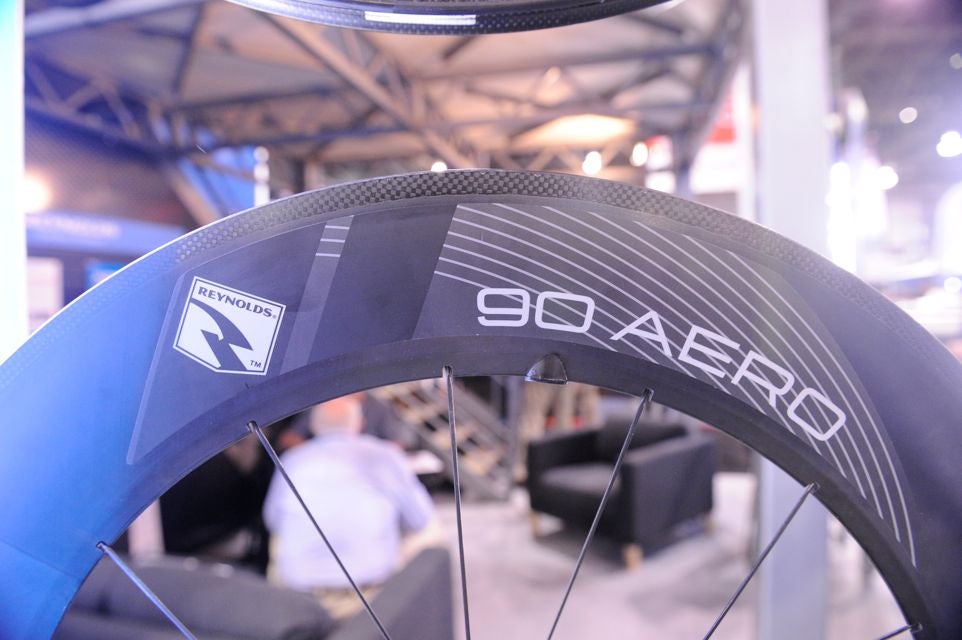Interbike 2012: Reynolds’ New Aero Wheel Line

The Reynolds Aero 90, the deepest rim built with the sharp spoke bed. Photo: Aaron Hersh
Reynolds’ new aero wheel line uses a vastly different rim shape than Zipp et al.
Reynolds just joined the wide wheel movement. While they had an exotic set with a very broad brake track called the RZR 92, their more common and (sort of) affordable race wheels (about $2,000 rather than $5,000) had narrow rim shapes. Lagging no longer, Reynolds has created a line of metal-spoked wheels built upon the RZR 92 rim shape called the Aero 58, Aero 72 and Aero 90.
Just about all the current aero wheel leaders have adopted rim shapes with a wide brake track and blunted spoke bed, but the composites company from Utah has a unique take on the “best” way to design a rim.
Like wheels from Zipp, Hed, Bontrager and others, the Reynolds Aero line has a wide brake track, but the spoke bed is very different. Zipp introduced the concept of using a blunted inner diameter for two reasons.
First, they say it minimizes steering input from crosswinds.
Second, the rim surface that acts as a trailing edge (last surface air passes over) on the front half of the rim becomes the leading edge on the rear half of the wheel, which happens when riding in wide yaw angles that strike the rider at an angle. Blunting this segment reduces the drag created by this previously neglected portion of the rim, says Zipp and others. Reynolds went the opposite route when designing the RZR and the new aero wheel line.
Instead using a blunted spoke bed, the aero wheels come to a sharp point. The wheel’s designer Paul Lew says, “You’re not going to see other wheels coming to a tapered face like this.” He’s right. Reynolds has gone against the current trend to create this very unique rim shape.
Lew agrees that the rear half of the Reynolds aero wheel isn’t shaped with an effective leading edge, and he says it doesn’t need to be. “Our testing showed we get 90% of aero advantage from the leading edge,” says the veteran engineer. Instead of designing the rim to perform under these conditions, Lew says the sharp spoke bed optimizes the rim’s aerodynamic performance as a leading edge. Like most wheel manufacturers, Reynolds has their own aero data showing their wheels to be faster than the competition. This test was paid for, conducted and published by Reynolds.
The second advantage to a blunted inner diameter claimed by many of Reynolds’ competitors—improved handling in cross winds—has been validated in many ride tests by manufacturers, athletes and media reviewers alike.
Lew says his antithetical design does the same thing only better. They both can’t be right.
More data displayed in the Reynolds booth showed their aero line (58, 72 and 90mm depths) creates less side force than other wheels. Side force is the force pressing against the rider and bike, but steering torque is more important to handling predictability and Reynolds did not have this data on display.
In addition to the rim’s unique shape, it also hides the nipples internally. The 58mm version weighs 1580 grams ($2,775), 72mm is 1680g ($2,875) and the deepest 90mm version is 1875g ($2,975). They are all available as clinchers.
Reynolds’ bolt claims need to be verified by third parties, but they are one of few wheel makers with a truly unique rim shape without a peer or imitator in the market.
RELATED: The Next Evolution Of Aero Wheels